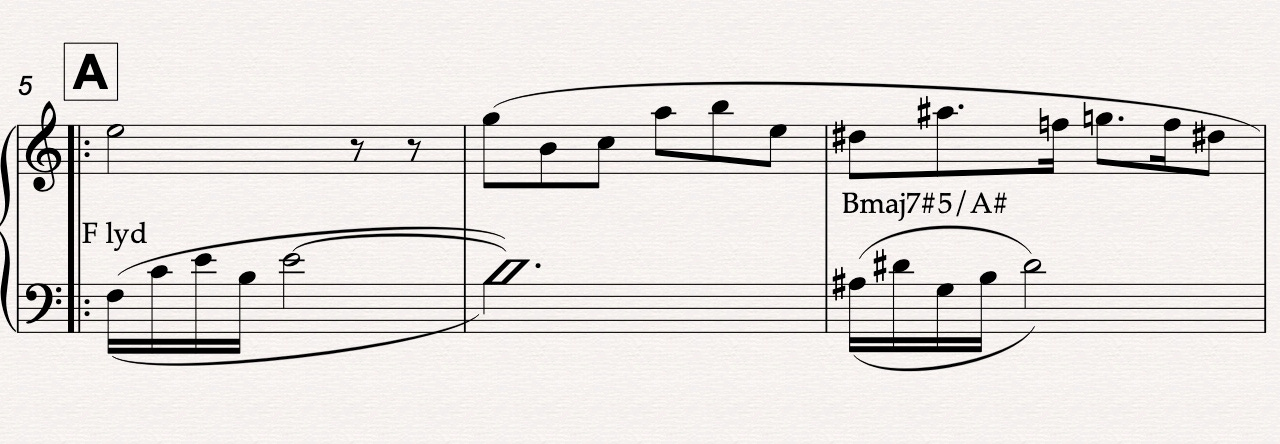When defining a harmony that may appear obscure to an improviser in the midst of moving chord changes, e.g., C(sus b2), a triad containing the root C, the b2 Db and the 5th G, or simply wanting to imply a seven-tone tertian harmony, it is an option to use modal symbols. In the chart below the first four Heptatonic Systems with their respective seven modes each are illustrated. This provides 28 modal symbols.
There are many more from all the possible Heptatonic Systems that we will investigate in the future, but the ones below are in more common usage. Most improvising musicians, post-post-bop, would be familiar with the modal symbol C lyd in the context of chord changes.
The following excerpt from my composition Wintertide shows two measures of written accompaniment with the relevant Modal Symbols above. These symbols have the same role as a chord symbol, awakening, perhaps, in the improviser an alternative way to respond to a sonority.
Here is another example of using a Modal Symbol, this time in conjunction with Chord Symbols. This example is from my composition Water From Your Spring.
All of my compositions will be published here on Substack and available little by little for paid subscribers.
Again, we are using C as the root of each system, so the roots of each ensuing mode will be the tone as it appears in that system, so the sixth mode of C Harmonic Minor would begin on Ab.
We will start with the first four Heptatonic Systems - Major, Melodic Minor, Harmonic Minor and Harmonic Major.
Next: We view the structure of these Heptatonic Systems in even more detail and introduce Symmetrical Scales.
Copyright © 1993-2023 Jack DeSalvo






